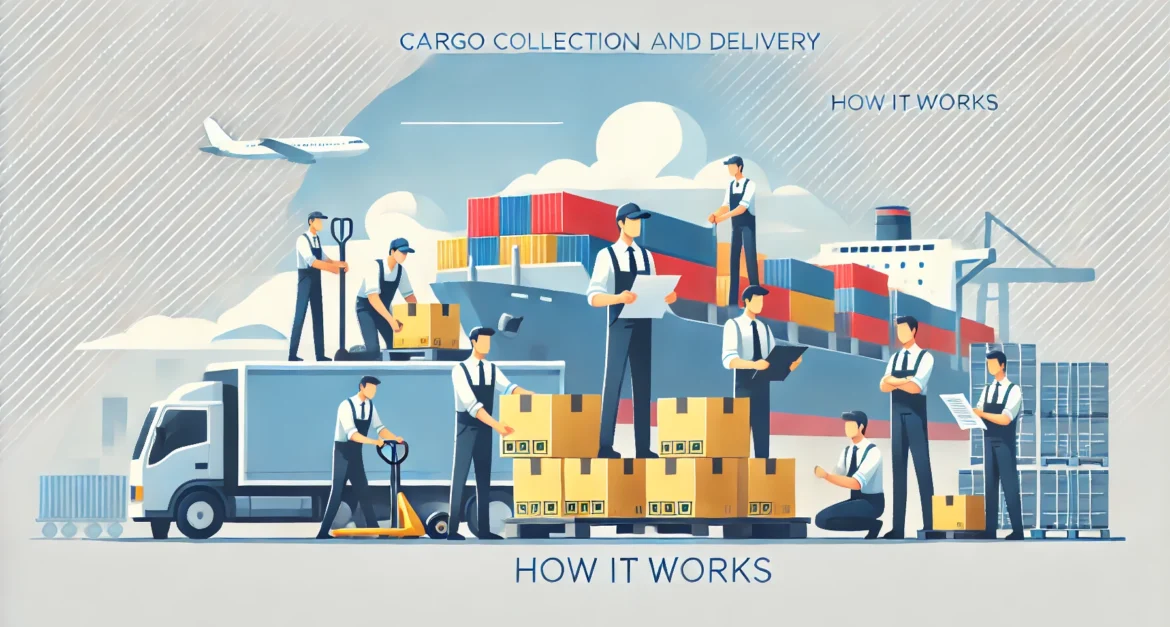
Cargo Collection and Delivery: A Complete Guide
In today’s fast-paced logistics world, cargo collection and delivery are crucial components of the global supply chain. Whether you’re a business ensuring timely shipments or a consumer awaiting delivery, understanding how the process works can simplify logistics and enhance efficiency. Furthermore, knowing each step helps both senders and recipients manage expectations more effectively.
Understanding the Basics of Cargo Logistics
The cargo collection and delivery process involves transporting goods from one point to another using various modes of transportation such as trucks, trains, ships, and airplanes. Moreover, every step ensures goods reach their destinations safely and on time, making it a key aspect of global trade. Additionally, understanding this process helps businesses and individuals make informed decisions about shipping options.
The Collection Phase
Scheduling and Preparation
- Booking the Pickup: Shippers begin by providing details like pickup location, cargo specifics, and timelines to logistics companies. Consequently, this ensures the process starts on the right track.
- Preparation: Properly packaging and labeling the cargo according to regulations ensures it remains intact during transit. Similarly, preparation minimizes potential delays and damages.
Pickup and Initial Transport
- Pickup Execution: A logistics provider collects the goods using appropriate vehicles and equipment, ensuring smooth loading. Moreover, experienced teams make the process seamless.
- Depot Transfer: Cargo moves to a local depot for sorting and preparation for the next transport leg. This step helps streamline the logistics workflow.
Cargo Handling and Transit
Handling and Storage
- Warehouse Storage: Temporary storage allows for proper consolidation before the cargo moves forward. Consequently, this ensures organized handling at every stage.
- Skilled Handling: Trained teams ensure careful loading and unloading to prevent damage. Additionally, specialized techniques protect fragile items during transit.
Transporting Goods
- Choosing the Right Mode: The choice of road, rail, air, or sea transport depends on the shipment’s distance and urgency. Therefore, selecting the correct mode ensures timely deliveries.
- Switching Modes: Some shipments require multiple modes, like moving from a ship to a truck for final delivery. Similarly, efficient coordination minimizes delays during transfers.
Tracking and Monitoring
- Real-Time Updates: Tracking systems provide live updates, allowing senders and recipients to monitor the shipment’s journey. This transparency builds trust between all parties involved.
- Regulation Compliance: Logistics providers ensure shipments adhere to safety and international standards. Additionally, compliance protects businesses from potential legal issues.
The Delivery Phase
Customs and Arrival
- Reaching the Destination: The shipment arrives at its final city or country, where it clears customs before proceeding. Consequently, accurate documentation accelerates this process.
- Customs Clearance: Verifying documents and paying necessary duties ensure legal transit. Similarly, efficient clearance reduces delivery delays.
Final Delivery
- Recipient Handoff: Local couriers handle the final leg, delivering goods directly to the recipient. Furthermore, professional delivery teams maintain quality service during this crucial step.
- Delivery Confirmation: The recipient provides confirmation, ensuring the shipment arrived as intended. This step also allows businesses to close the transaction confidently.
Addressing Challenges in Cargo Delivery
- Managing Risks: Delays, misplacements, or damages can occur, but proactive planning mitigates these issues. Additionally, understanding potential risks helps create contingency plans.
- Leveraging Technology: Tools like GPS tracking and automation enhance reliability and streamline the process. Consequently, technology reduces human errors and boosts efficiency.
Conclusion
The cargo collection and delivery process is a cornerstone of modern trade and logistics. By understanding the steps involved, businesses can optimize their shipping strategies while consumers gain insight into the mechanisms behind timely deliveries. Furthermore, detailed knowledge empowers all parties to make better decisions. Whether managing shipments or tracking orders, understanding logistics builds confidence and ensures smooth operations.




